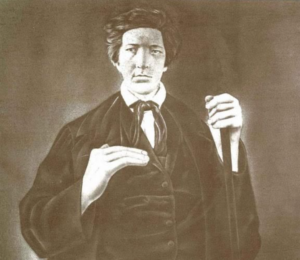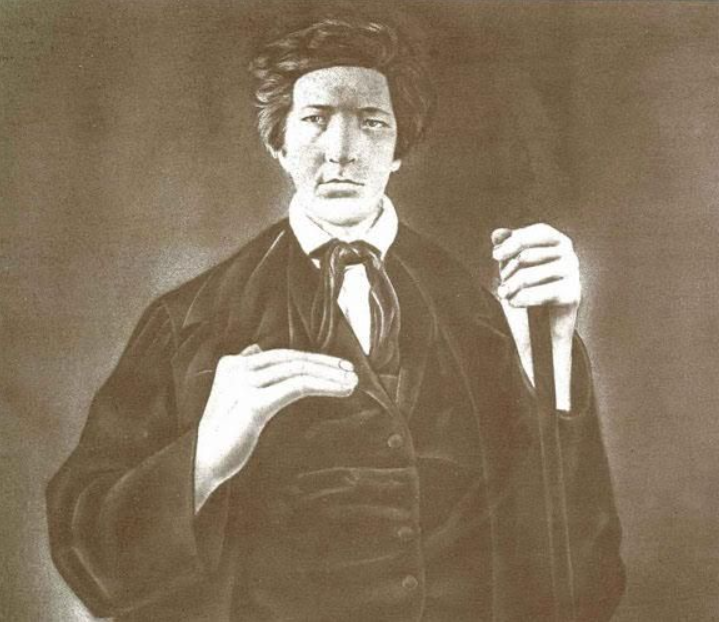Writer / Dave Matheis
Photography Provided
In January of 1842, Charles Dickens arrived in America for his first tour of the country. Not quite 30, he was already what we would now call a celebrity, having published five popular novels including “The Pickwick Papers,” “Oliver Twist” and “The Old Curiosity Shop.” “A Christmas Carol” would be published late in the following year.
During his five-month tour of the country he visited Boston, New York, Washington, Baltimore, Montreal, Toronto, Cincinnati, St. Louis and, briefly, Louisville, among many other places. He met with many notable Americans including Washington Irving, Edgar Allan Poe, the Kentuckian Henry Clay, Daniel Webster, former President John Quincy Adams, and then-current President John Tyler in the White House. Just a few months after his tour he published a book detailing his experiences and impressions, called “American Notes.”
During his brief overnight stop in Louisville, he requested to see one person, “Big” Jim Porter, regarded as the tallest man in the world, himself a local celebrity. Porter was born in Ohio in 1811, just 10 months before Dickens was born in England. His family soon moved to Shippingport Island in Kentucky, a short distance downriver from Louisville. It is now part of the city near the Portland neighborhood.
Porter was of normal size and growth until age 17. He was even described as scrawny. In fact, when he was 14 he began a brief career as a jockey at the Elm Tree Garden racetrack. At 17, however, he began to grow very quickly. It was said he could grow an inch a week. For a time he allowed himself to be measured and weighed weekly, and locals placed bets on how much he had grown that week. By the age of 30 he had reached his full height of seven feet, eight inches, and weighed 300 pounds. His hands were 13 inches long and his feet 15.
He apprenticed as a cooper (barrel maker), but became too large to do the job. He then worked as a carriage driver or hack driver. In one Courier-Journal article, someone was reported to have said, “His head and body towered over the hack like the steeple of a church.” He toured the eastern United States in 1836 and 1837 in a stage production of “Gulliver’s Travels” with a company of dwarfs. It was through this tour that he gained a measure of national notoriety. P. T. Barnum once offered him the opportunity to travel with his circus, but Porter was not comfortable with that kind of attention and turned it down. He became an operator of drinking establishments in Portland, the most notable being The Lone Star Tavern.
And that was what he was doing when Dickens arrived in Louisville. Dickens had been visiting Cincinnati and traveled down the Ohio by steamboat along with Peter Pitchlyn, a Choctaw chief returning to his tribe west of the Mississippi after 17 months of negotiations in Washington. They arrived in Louisville around midnight and went directly to the Galt House. The next day, he is said to have sent a request to Porter to visit him at the hotel. It was reported that Porter said in response that if it was so important for the author to meet him, he could come to him. And Dickens did, going by carriage from the hotel to what was then the suburb of Portland, where he was to catch another steamboat to St. Louis.
Porter left no record of his impressions of their meeting, but Dickens described it briefly in “American Notes.” He noticed that “the Kentucky Giant whose name was Porter” seemed to have a “weakness in the region of his knees and a trustfulness in his long face.” The author had trouble imagining Porter as a carriage driver because of his size. He noticed that Porter had with him a weapon Porter dubbed “the Little Rifle,” which was actually about as tall as Porter. It was something he carried with him everywhere. After their brief discussion, Dickens wrote of Porter departing that he “went bobbing down the cabin, among men of six feet and upwards like a light-house walking among lamp-posts.”
Although he might have been impressed by Porter, Dickens was not overly impressed with Louisville or, for that matter, the United States as a whole. In “American Notes” he described the buildings in Louisville as “smoky and blackened,” not unlike those in his native London, since both cities primarily used coal for heating. He passed “a Magistrate’s Office,” (essentially a police station) which he described as “nothing but a little lazy, good for nothing front parlor, open to the street.” Of his trip from the Galt House to Portland, he said “the road was perfectly alive with pigs of all ages, lying about in all directions.”
As for America, in “American Notes” he made clear that he abhorred the institution of slavery, although failing to mention that his British Empire had largely made it possible. He also criticized the American press for not keeping the American people better informed.
Dickens’ fame and popularity as a writer only grew after 1842. He wrote 15 novels in his lifetime, along with many, many short stories and a number of nonfiction books. He returned to America for a speaking tour in 1867 and 1868, and included an apology for his past harsh words about the country at many of his stops. He died at his home in London after suffering a stroke in 1870.
As for Jim Porter, he continued as a tavern owner, although he expanded his establishment at what turned out to be the worst time. As railroad travel become more popular, travel by steamboat declined, and this significantly hurt his Portland-based business in the 1850s. His appearance in “American Notes” did increase his fame and he remained a celebrity for the rest of his tragically short life. In 1859 he was found dead in his bed, and the cause was probably heart disease.
It is generally accepted today that Jim Porter had acromegaly, a disorder of the pituitary gland that results in the production of too much growth hormone in adulthood. A benign tumor known as a pituitary adenoma is the cause in 95% of the cases. People who have the disorder can grow very tall with long arms and legs, and often elongated faces. Diabetes, hypertension, joint pain, vision problems and headaches are common complications. About three in every 50,000 people develop the disorder, which can now be treated by surgery and medication. Acromegaly was probably the cause of Porter’s heart problems that resulted in his death.
A eulogy printed in a Louisville newspaper shortly after his death read, in part, “He was modest and retiring, the very soul of honor and honesty…He was a gentleman of intelligence and wielded a considerable influence among his neighbors and friends.”
Information for this article was gathered principally from articles in the Louisville Courier-Journal and from the book “American Notes” by Charles Dickens.





